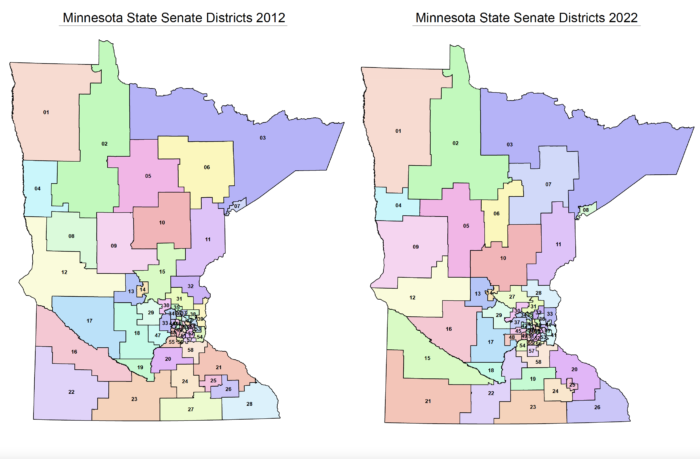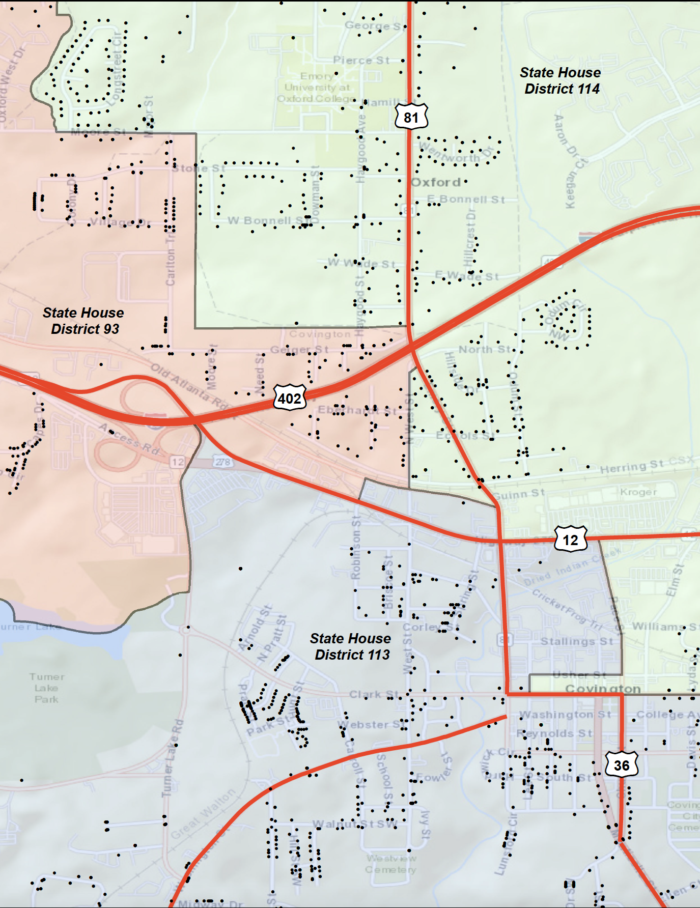Abby: Hello and welcome! My name is Abby Vendt and I am the Creative Marketing Coordinator at Data Trust, as well as today’s interviewer. Our topic for this blog is the redistricting process. The process might seem bland or unexciting. Yet it plays a crucial role in determining the political temperature of a state. With us to discuss this topic is Joe Wolf, GIS Specialist and Manager at Data Trust. Welcome Joe!
Joe: Thanks for having me!
Abby: Let’s jump right in. You work a lot with the redistricting process. Can you please explain what it is?
Joe: The process refers to the changing of district boundaries within a state based on population. Think about it this way – you have a state, let’s say Minnesota for example, with 8 congressional districts. Every ten years, as people move around, those 8 districts are affected by changing population distribution. To accurately represent those Americans, new district lines are drawn, inevitably shrinking or expanding districts based on population centers.

Abby: I have often heard people use the term reapportionment interchangeably with redistricting. What is the difference between the two?
Joe: Reapportionment is different in that it refers to the redistribution of political seats among the 50 states. Similar to the redistricting process, the representative count is reevaluated every 10 years. However, the difference lies in that reapportionment is based on statewide population and only affects the number of congressional seats. For instance, Oregon increased its number of seats from 5 to 6 this decade.
Abby: For people like myself who may not understand the relevancy of the redistricting process, why does this matter?
Joe: The process may not be flashy. It’s not something most people want to talk about at a cocktail party or chat about on the softball field. But it remains an integral part of American democracy. It directly affects who you can vote for, the political identity of your district, and the potency of your vote. The process affects politics at the local level, which means the direction of the country is impacted by it. All Americans have a vested interest in the state of our country and thus should care about the redistricting process.
Abby: What does Data Trust utilize redistricting data for?
Joe: Data Trust uses redistricting data to maintain an accurate voter file, ensuring our clients have the most up-to-date information possible. Once a state has completed its redistricting process and codified it into law, Data Trust receives the finalized shapefiles. We then take those shapefiles and layer on the voters of the state with the new, updated political geography for the upcoming election. This essentially means that we take the time to update the information in our voter file to accurately reflect the changes in the states.
Abby: You mentioned a term just now that may be a little foreign to our audience. Can you please explain what you mean by shapefile?
Joe: A shapefile is a geospatial data format used in Geographic Information Systems (GIS) software. It contains 4 to 8 individual files. A shapefile can be saved as points, lines, or polygons when opened in GIS software.

Abby: Now that we have a better understanding of that term, what are some of the challenges that come with using redistricting data to create maps?
Joe: First, redrawing is an issue we face. Often states will approve new lines, only for the courts to throw out those lines and order them redrawn. This means the collection, spatial analysis, and data analysis must be reprocessed by the Data Trust departments.
Secondly, lack of information makes the process very time-consuming. Sometimes, we receive just the longitude and latitude coordinates for a shapefile and have to manually fill in information for certain districts.
Third, time constraints create a problem. Once the state’s redistricted shapefile is collected by our GIS department (again, a long process), we run a spatial analysis. This process can take days, meaning that every change at the state level directly impacts the efficiency of the team.
Abby: How has Data Trust made an impact using redistricting data?
Joe: Due to the consequential nature of the redistricting process, Data Trust includes the spatial changes in the voter file. This creates a more precise and complete database which allows us to continue providing the highest quality political data for right-of-center organizations.
Abby: Awesome! Thank you so much for taking the time to share this information with us. We appreciate it.
Joe: Of course! Thanks for having me.
Abby: Stay tuned for the next blog.